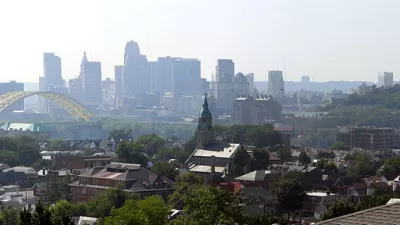It used to be that only New Orleans and Las Vegas allowed people to carry a drink outdoors and imbibe in public. Now cities all over the country, mostly in traditionally conservative states, are loosening their laws.
"Beginning in the 1950s, many cities banned open containers of alcohol in public. Now Canton [Ohio] and several other cities are bringing it back — in a controlled fashion — to appeal to millennials and attract tourists and conventions," according to an article by Tim Henderson.
"In addition to Canton, other Ohio cities including Lancaster, Lorain, Middletown and Toledo launched public drinking areas this year, as did Mississippi cities such as Biloxi and Gulfport," adds Henderson. The changes in local laws followed changes to state laws in both states. But those aren’t the only example of public drinking districts created in the recent years. Nashville, Tennessee; Lincoln, Nebraska; and Mobile, Alabama have all created similar public drinking districts.
Henderson focuses on the example of Canton, which is faced with a shrinking population, currently at 60 percent of its past peak. There, as in in other cities, public drinking is considered a nightlife attraction for Millennials. The article also relies on the testimony of Jim Peters, founder of the Responsible Hospitality Institute.
Hat tip to Barbara Eldredge for sharing the article.
FULL STORY: To Enliven Downtowns, Some Cities Promote Public Drinking

Maui's Vacation Rental Debate Turns Ugly
Verbal attacks, misinformation campaigns and fistfights plague a high-stakes debate to convert thousands of vacation rentals into long-term housing.

Planetizen Federal Action Tracker
A weekly monitor of how Trump’s orders and actions are impacting planners and planning in America.

Chicago’s Ghost Rails
Just beneath the surface of the modern city lie the remnants of its expansive early 20th-century streetcar system.

Bend, Oregon Zoning Reforms Prioritize Small-Scale Housing
The city altered its zoning code to allow multi-family housing and eliminated parking mandates citywide.

Amtrak Cutting Jobs, Funding to High-Speed Rail
The agency plans to cut 10 percent of its workforce and has confirmed it will not fund new high-speed rail projects.

LA Denies Basic Services to Unhoused Residents
The city has repeatedly failed to respond to requests for trash pickup at encampment sites, and eliminated a program that provided mobile showers and toilets.
Urban Design for Planners 1: Software Tools
This six-course series explores essential urban design concepts using open source software and equips planners with the tools they need to participate fully in the urban design process.
Planning for Universal Design
Learn the tools for implementing Universal Design in planning regulations.
planning NEXT
Appalachian Highlands Housing Partners
Mpact (founded as Rail~Volution)
City of Camden Redevelopment Agency
City of Astoria
City of Portland
City of Laramie





























